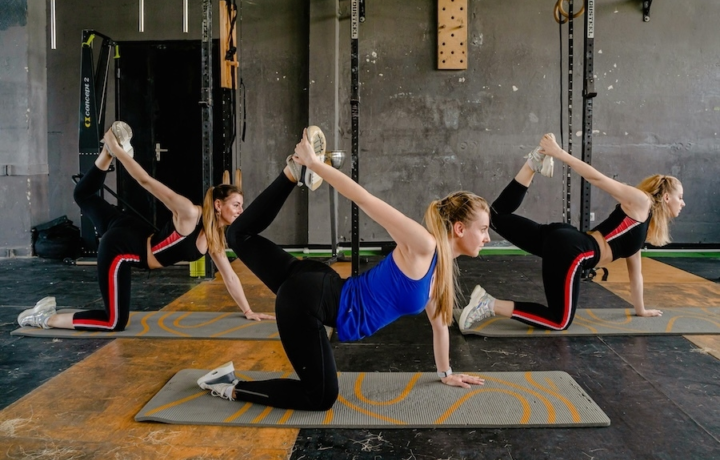Exercise
Superman Chest Stretch

Superman Chest Stretch
How to Perform
- Lie face down on a mat with your arms extended straight out to the sides at shoulder height, palms facing down.
- Engage your core muscles to stabilize your spine and maintain a neutral neck position throughout the movement.
- Simultaneously lift your chest, arms, and legs a few inches off the floor while keeping your arms straight out to the sides like a "T" position.
- As you lift, externally rotate your arms so your thumbs point toward the ceiling, creating a stretch across your chest and shoulders.
- Hold the elevated position for 2-3 seconds while breathing normally, focusing on expanding your chest with each breath.
- Slowly lower your body back to the starting position while maintaining control and core engagement.
- Reset your position by relaxing your shoulders and ensuring your forehead is gently touching the mat before beginning the next repetition.
- Repeat for the prescribed number of repetitions, typically 8-12, breathing rhythmically throughout the exercise.
Important information
- Keep your neck in a neutral position by looking slightly forward rather than lifting your chin excessively.
- Focus on squeezing your shoulder blades together as you lift to maximize the chest stretch.
- If you feel any discomfort in your lower back, reduce the height of your lift or place a small pillow under your hips.
- Quality of movement is more important than height – even a small lift with proper form will provide an effective stretch.

Superman Chest Stretch
Exercise Details
Primary Muscles
Muscle Groups
Mechanic
Built for progress
Take the guesswork out of training
Create personalized AI-powered workout plans that evolve with you. Train smarter, track every rep and keep moving forward, one workout at a time.






The Superman Chest Stretch offers a fantastic way to open up your chest and shoulder muscles after they've been contracted during your workout or daily activities. This beginner-friendly stretch primarily targets the pectoral muscles (pecs) and anterior deltoids (front delts), making it an excellent addition to your recovery routine, cool-down session, or even as part of your warm-up sequence.
When we spend hours hunched over desks or phones, our chest muscles tighten and shoulders roll forward. This simple yet effective stretch counteracts that posture by creating length through these chronically shortened tissues. The beauty of the Superman Chest Stretch lies in its accessibility—it requires no equipment and can be performed virtually anywhere you have a bit of space.
Adding this stretch to your mobility work can significantly improve your range of motion for exercises like bench presses, push-ups, and other chest-focused movements. By regularly incorporating this stretch, you're not just enhancing recovery but also potentially boosting your performance in pressing movements by ensuring your chest muscles can move through their full range.
The gentle but effective tension created during this stretch helps increase blood flow to the pectoral region and front shoulders, which accelerates recovery by delivering nutrients to tissues that might be fatigued from training. Many fitness enthusiasts report feeling an immediate sense of relief and openness across the chest after performing this stretch.
For optimal results, consider including the Superman Chest Stretch in your cool-down routine after any upper body training day. It pairs particularly well with other stretching and mobility work focused on the upper body. While it feels wonderful after training, it can also serve as an energizing morning stretch to counter sleep postures or as a quick break during long periods of sitting to reset your posture and reawaken your upper body.
FAQ - Superman Chest Stretch
Hold the stretch for 20-30 seconds per side for optimal results. For deeper release of tension, you can perform 2-3 sets per side with a brief rest between each stretch.
This stretch primarily targets the pectoral muscles (chest) and anterior deltoids (front shoulders). It also secondarily engages the biceps and helps release tension across the entire anterior chain of the upper body.
If you have existing shoulder pain or injuries, approach this stretch with caution and reduce the range of motion. Stop immediately if you feel any sharp pain, and consider consulting a physical therapist for modifications suitable for your specific condition.
The most common mistakes include overextending the arm (causing shoulder strain), rushing through the movement, and not maintaining proper alignment. Keep your core engaged, move slowly, and focus on feeling the stretch in your chest rather than forcing the position.
For best results, perform this stretch 2-3 times per week after upper body workouts. You can also incorporate it daily as part of your morning routine or during breaks from desk work to counter rounded-shoulder posture.








